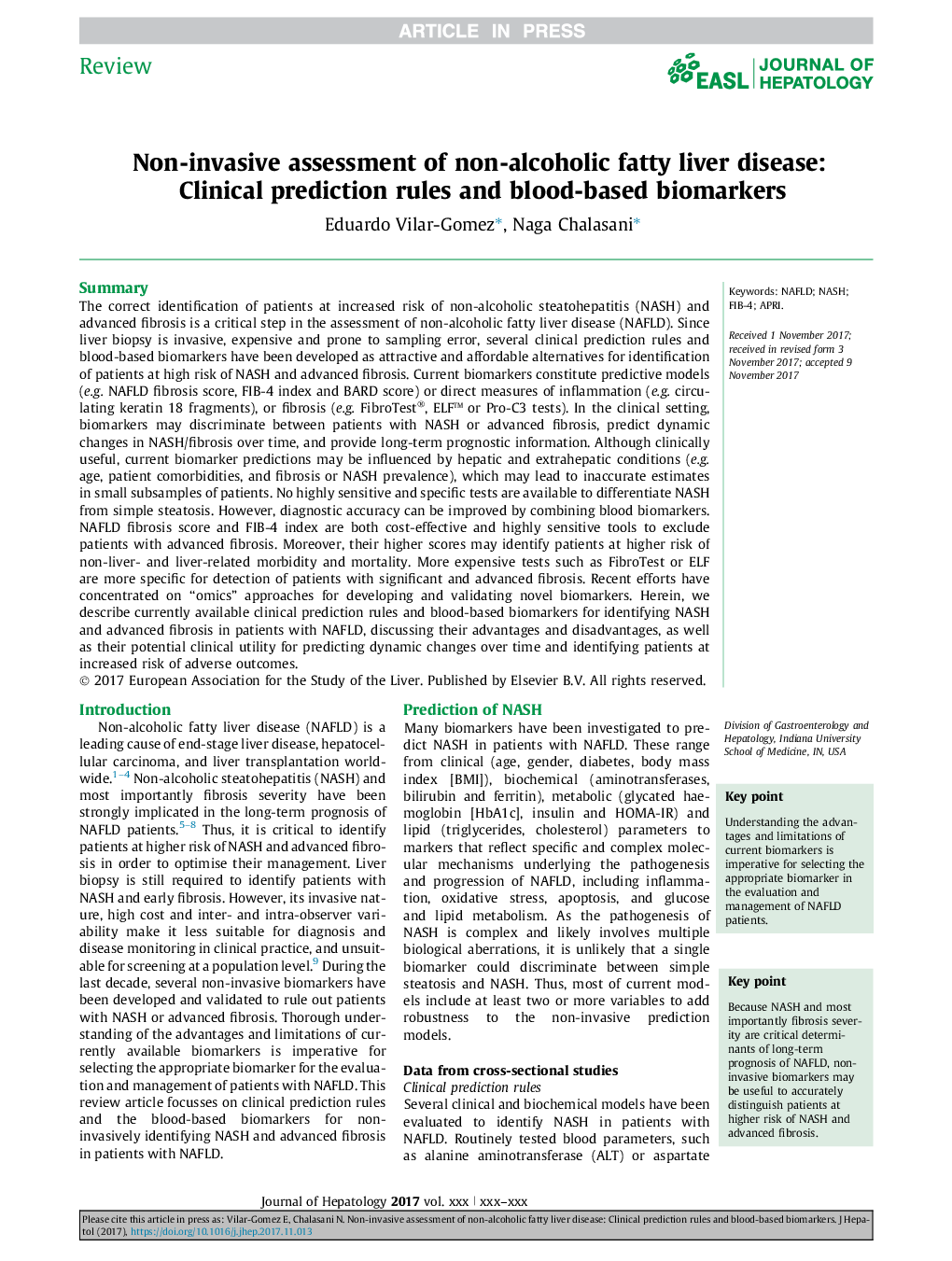| کد مقاله | کد نشریه | سال انتشار | مقاله انگلیسی | نسخه تمام متن |
|---|---|---|---|---|
| 8729352 | 1590320 | 2018 | 11 صفحه PDF | دانلود رایگان |
عنوان انگلیسی مقاله ISI
Non-invasive assessment of non-alcoholic fatty liver disease: Clinical prediction rules and blood-based biomarkers
ترجمه فارسی عنوان
ارزیابی غیر تهاجمی از بیماری کبد چرب غیر الکلی: قوانین پیش بینی بالینی و بیومارکرهای مبتنی بر خون
دانلود مقاله + سفارش ترجمه
دانلود مقاله ISI انگلیسی
رایگان برای ایرانیان
کلمات کلیدی
موضوعات مرتبط
علوم پزشکی و سلامت
پزشکی و دندانپزشکی
بیماریهای گوارشی
چکیده انگلیسی
The correct identification of patients at increased risk of non-alcoholic steatohepatitis (NASH) and advanced fibrosis is a critical step in the assessment of non-alcoholic fatty liver disease (NAFLD). Since liver biopsy is invasive, expensive and prone to sampling error, several clinical prediction rules and blood-based biomarkers have been developed as attractive and affordable alternatives for identification of patients at high risk of NASH and advanced fibrosis. Current biomarkers constitute predictive models (e.g. NAFLD fibrosis score, FIB-4 index and BARD score) or direct measures of inflammation (e.g. circulating keratin 18 fragments), or fibrosis (e.g. FibroTest®, ELF⢠or Pro-C3 tests). In the clinical setting, biomarkers may discriminate between patients with NASH or advanced fibrosis, predict dynamic changes in NASH/fibrosis over time, and provide long-term prognostic information. Although clinically useful, current biomarker predictions may be influenced by hepatic and extrahepatic conditions (e.g. age, patient comorbidities, and fibrosis or NASH prevalence), which may lead to inaccurate estimates in small subsamples of patients. No highly sensitive and specific tests are available to differentiate NASH from simple steatosis. However, diagnostic accuracy can be improved by combining blood biomarkers. NAFLD fibrosis score and FIB-4 index are both cost-effective and highly sensitive tools to exclude patients with advanced fibrosis. Moreover, their higher scores may identify patients at higher risk of non-liver- and liver-related morbidity and mortality. More expensive tests such as FibroTest or ELF are more specific for detection of patients with significant and advanced fibrosis. Recent efforts have concentrated on “omics” approaches for developing and validating novel biomarkers. Herein, we describe currently available clinical prediction rules and blood-based biomarkers for identifying NASH and advanced fibrosis in patients with NAFLD, discussing their advantages and disadvantages, as well as their potential clinical utility for predicting dynamic changes over time and identifying patients at increased risk of adverse outcomes.
ناشر
Database: Elsevier - ScienceDirect (ساینس دایرکت)
Journal: Journal of Hepatology - Volume 68, Issue 2, February 2018, Pages 305-315
Journal: Journal of Hepatology - Volume 68, Issue 2, February 2018, Pages 305-315
نویسندگان
Eduardo Vilar-Gomez, Naga Chalasani,
